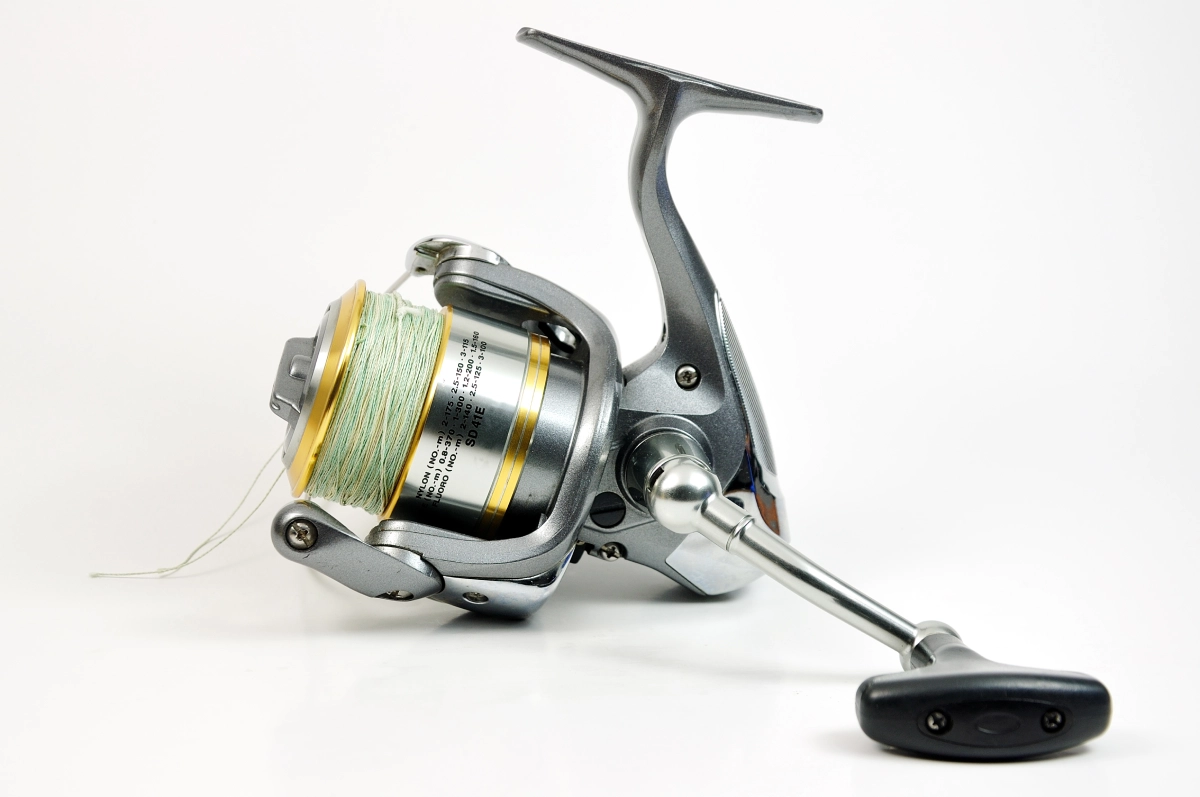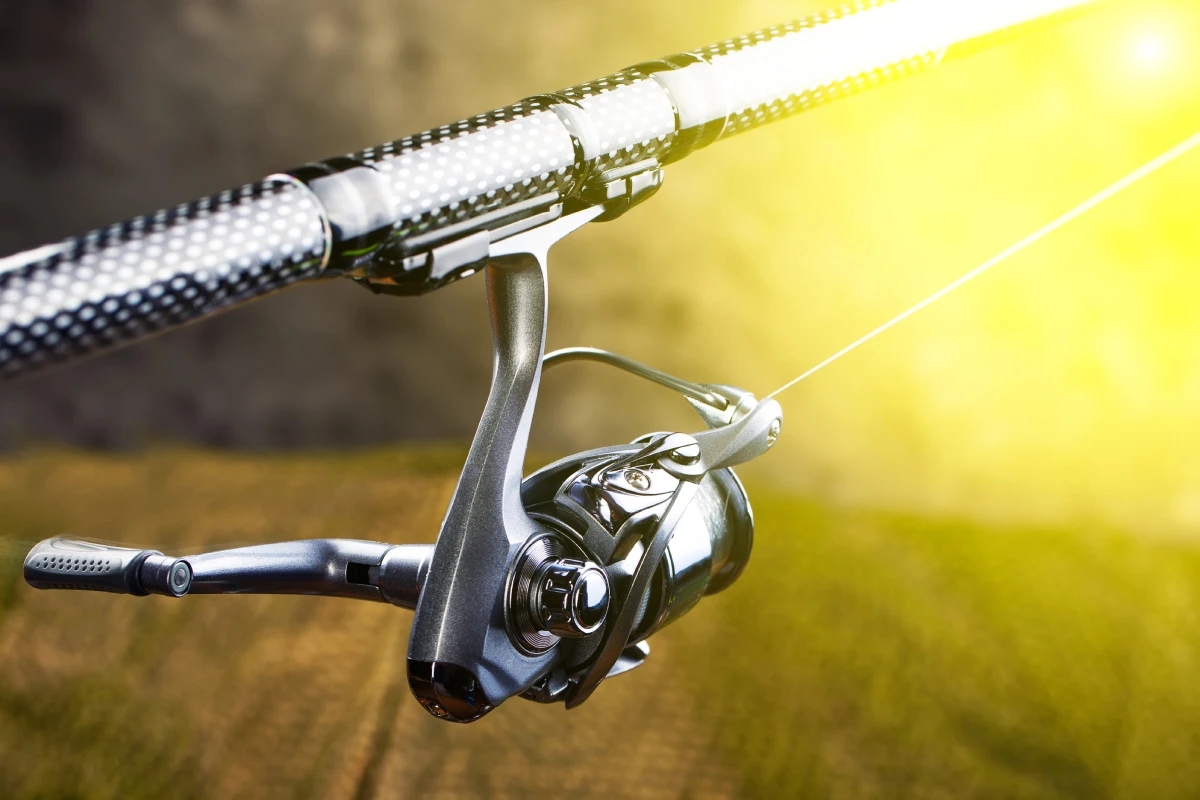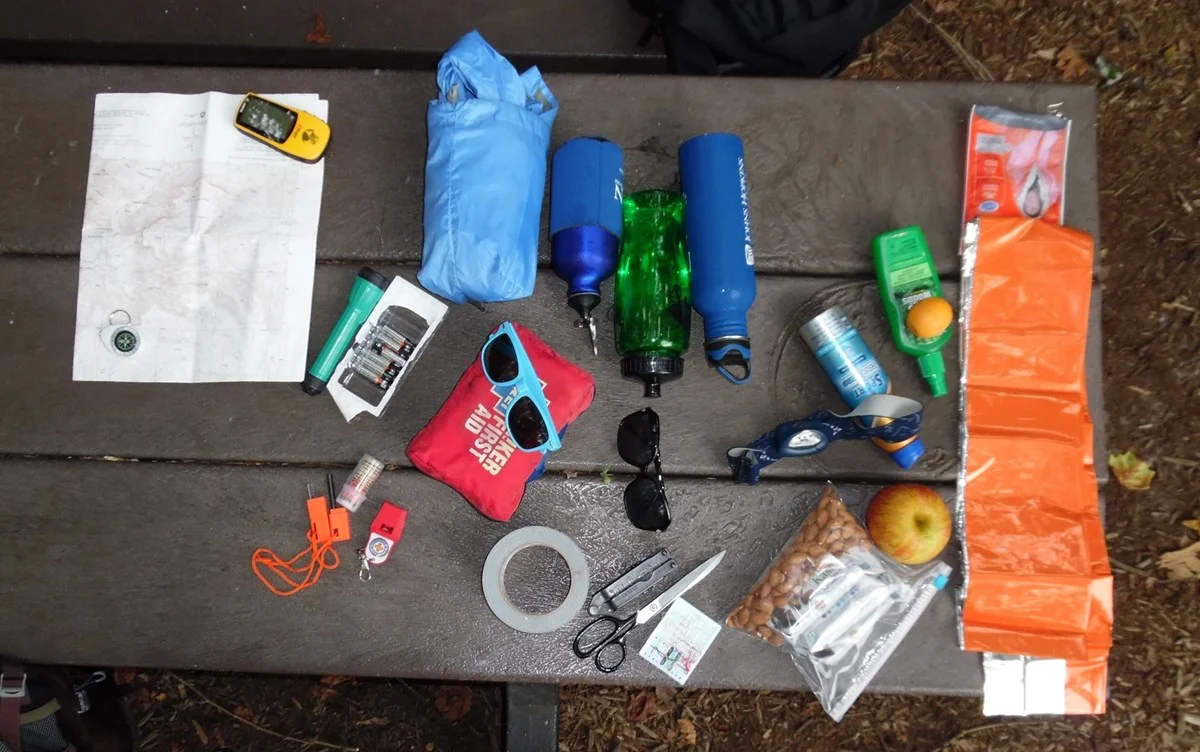Why Pick A Spinning Reel For Fishing?
Beginners pick a spinning fishing reel because it’s easy to learn and use. Experienced anglers like it due to it excelling for finesse fishing. But do you know all about spinning reel basics? Not knowing everything can make searching for the right model challenging.
Anyone who chooses to fish as a hobby has at one point been a bit overwhelmed trying to select gear. With many types of reels combined with inadequate knowledge, reel selection is daunting.
For newcomers, it’s important to learn reel operation and what affects reel performance. Plus, you have to decide where you are fishing and what you are targeting.
To lessen your confusion, I wrote this spinning reel basics article. In it, you will first learn what a spinning reel is, second I will explain its visible parts. Third, I provide 8 factors to help choose which reel will meet your needs.
If you want information on a specific step, there is a clickable table of contents. Let’s begin.
What Is A Spinning Reel For Fishing?
A spinning reel is an open-faced reel with a visible spool that attaches to the underside of a rod. Unlike baitcasting or spin-casting reels which attach on top of the rod. A spinning fishing reel is easier to use than a baitcasting reel and more accurate than a spin cast reel.
With this type of reel, the line wraps around the open-faced spool. Then it passes over a small wheel called the line or power roller before moving up through the rod guides. The metal arm across the spool is a bail, it keeps the line in place and ensures is passes over the line roller.
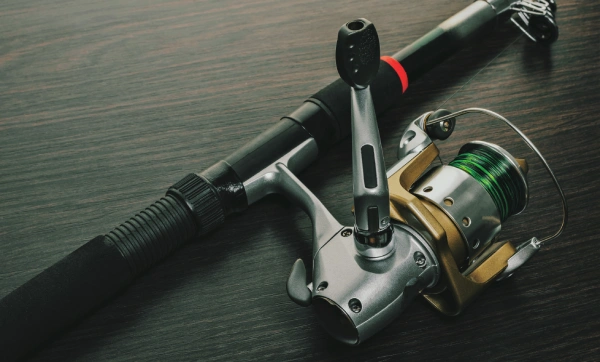
To cast you would open the bail, put your finger on the line and cast. Then to retrieve it, you close the bail, then turn the handle clockwise to reel it back in. Keep in mind that some anglers call spinning reels multiplier reels. All this means is that one full revolution of the handle will cause the spool to rotate more than one time.
The most common problem anglers have when using spinning reels is getting a twisted line. When this happens, you need to pull several feet of line out of the spool until it lies flat on the face. Then slowly rewind the line on the spool to ensure it lays smooth and flat.
The other drawback of the spinning reel is it can’t handle heavy weights over 20 pounds. For this weight and over it is best to use a bait casting reel.
Related: Discover The Best Shimano Spin Reels For 2024
Spinning Reel Basics: What Are The Visible Parts?
There are eight visible parts on this type of reel as shown below. Each is a functional consideration that you will choose based on your wants.
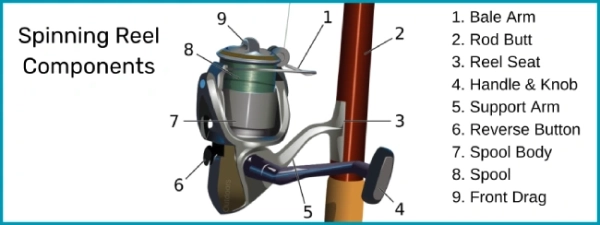
1. Reel Foot
A spinning reel attaches to the rod by its foot. Most rods have a recessed section that the foot slips into.
2. Handle
Most handles of this type of reel are reversible. This way if the angler wants to, they can unscrew it and put it on the other side of the reel. Rotating the handle turns the spool and bail while retrieving the fishing line.
3. Reel Body
The body of a spinning reel is either made of plastic, graphite, aluminum, magnesium or carbon fiber. In general, plastic spinning reels are for children. Next, graphite is lightweight but not very durable. Aluminum reels are popular because they are affordable, durable and somewhat lightweight. Magnesium and carbon fiber spinning reels are top-of-the-line. As such they have every benefit the others have and are extremely lightweight.
4. Anti-Reverse Switch
This is a small on/off lever found on the bottom of the reel. By switching the anti-reverse switch “on”, the spool will not go backward. Then turning it “off” allows you to reel in reverse. This is a handy way to adjust tension when you don’t have time to adjust the drag while fighting a fish.
5. Line Spool
The spool is where the line sits on the reel. With spinning reels, the spool will spin with each turn of the handle. At the same time, the spool will also move up and down. So that the distribution of the line is even for cast and retrieval.
6. Drag Control/Spool Release
Spinning reels often come with a drag control on top of the spool for front drag systems. Otherwise, the drag control is at the back of the reel body for rear drag systems. Turning the drag knob makes it harder or easier for the reel to rotate. This is also where you can unscrew the spool to take it off and replace it with another spool.
7. Line (Power) Roller
Found between the bail arm and the spool is a little piece that spins putting a little resistance on the line. It also holds the line in place as the reel moves up and down during rotation. This essential part for line operation must never have any flaws or cuts. Otherwise, it will fray your line leading to a line break and a lost fish.
8. Bail
This is a metal wire which rotates as the handle of the reel turns. The bail’s function is to put the fishing line back on the spool as the angler reels it in.
Choose A Body Of Water, Freshwater or Saltwater
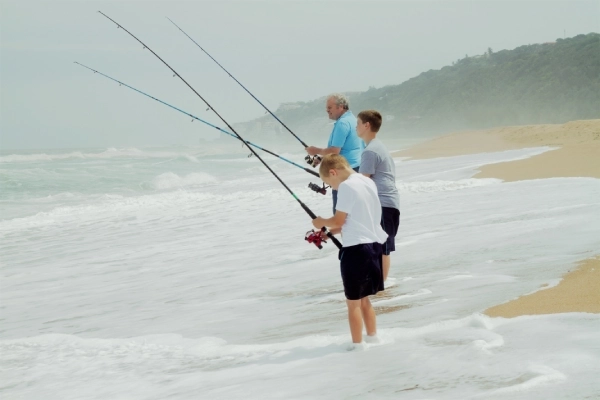
The first factor to consider when selecting a spinning fishing reel is the type of water body. By choosing a certain body of water you can choose a category of fish at the same time. With saltwater, you will target bigger fish than in freshwater.
The type of water matters because salt is so brutal and destructive to metal. Corrosion can put an end to the working life of your reel fast. It’s especially bad for the bearings inside a reel, salt build-up will slow or stop bearing movement. Inoperable bearings mean it’s time to buy a new reel!
Due to not needing corrosion resistance, freshwater reels can have cheaper basic metals. Whereas, saltwater reels need sealed saltwater-proof components to ward off salt intrusion.
To make your decision easier, here is a simple outlook for each type of water:
- Choose a saltwater reel if: fishing in either inshore (surf fishing) or deep offshore saltwater. Using heavy lures and long line capacity. In saltwater, you target big game fish species. As a bonus, you could use this reel for freshwater big fish too.
- Pick a freshwater reel if: fishing in lakes, rivers and ponds. Using light lures and shorter line capacity. In freshwater, you will do finesse fishing for small to medium-large fish.
Reel Size Is Dependent On Fishing Line Size
Now that you know where you intend to do your spinning fishing it’s time to consider my second tip. The reel size you want is dependent on the size of the fishing line you will most often use. In general, the lighter the weight of the fishing line, the smaller the reel size.
The easiest way to determine which reel is the most usable is to think about your average line strength.
For example:
Do you want to use 8 pound-test line? Your best choice is a reel size that’s rated for 6, 8, and a 10-pound line. This way you can size up or down your line when needed.
There are 4 categories of reel sizes:
- small
- medium
- large
- very large
To further explain, below is a sample chart of typical spinning fishing reel sizes:

Small Spinning Reels
Range from 1000 (or 10) to 3500 (or 35). Handles 2 to 10 pounds of monofilament and 4 to 14 pounds of braid fishing line. Used for slow-moving water, lakes, ponds, rivers, bays and harbors. Best for targeting smaller fish like bream, smallmouth bass, trout and pan fish.
Medium Spinning Reels
Range from 4000 (or 40) to 5500 (or 55). For use with 8 to 14 pounds of monofilament and 5 to 50 pounds of braid fishing line. Used in lakes, ponds, rivers, bays, harbors and light offshore boat fishing. Best for targeting medium-sized fish like walleye, largemouth bass, cod and bonefish.
Large Spinning Reels
Range from 6000 (or 60) to 8500 (or 85). Handles 12 to 45 pounds of monofilament and 30 to 80 pounds of braid fishing line. Used for fishing off a boat, beach/surf, inshore off docks or rocks. Best for hooking medium/large sized fish like musky, steelhead, snapper and carp.
Extra Large Spinning Reels
Range from 10,000 (or 100) to 30,000 (or 300). For use with 12 to 60 pounds of monofilament and 50 to 100 pounds of braid fishing line. Used in fast-moving water, offshore boat fishing, surf and inshore. Best for targeting massive-sized fish like sharks, tuna, sturgeon and halibut.
Spinning Reel Basics: What’s Line Capacity?
The line capacity of a fishing reel is the largest length of line the spool can hold without overloading. This means a bigger reel equals a bigger spool. In general, if all else is equal, you should get big distance casts with bigger-sized spools.
To find the line capacity of s spinning reel, most print them on the side of the reel. The number on the reel denotes the middle range of line capacity. It states capacity as a pound-test weight/length of a line. For example:
A reel with an “8 pound-test line/at 140 yards,” rating means you can use it with 6-pound and 10-pound lines too.
A Lightweight Reel Is A Keeper
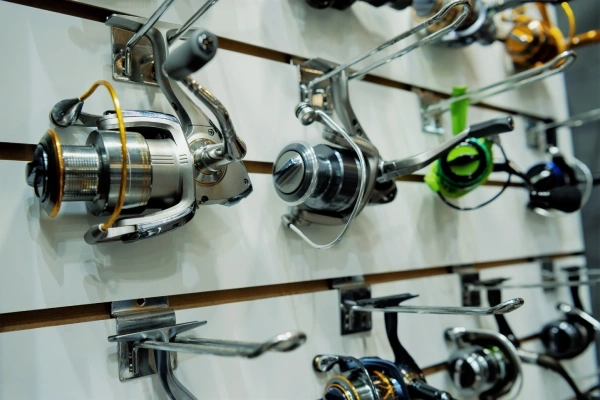
The first thing I do when buying a spin reel is to hold it in my hand. This will determine two important factors, one its weight and the second its comfort. To confirm reel weight you will have to choose the reel size and its frame material. For an appropriate size consult the chart mentioned in tip number 2.
After size, you will choose a material that suits you. The performance of a reel’ materials has to achieve two things. First, it needs to be strong to stand up to big fish. Second, it has to be lightweight to prevent angler fatigue.
Spinning Fishing Reel Materials:
- Plastic – Best for kids or extreme budget-limited anglers. Appropriate for smaller freshwater fish such as bluegill or river trout.
- Graphite – More resilient and lightweight than plastic. More expensive than plastic, but isn’t as inexpensive as aluminum or carbon. Fine for most freshwater and light saltwater fishing uses. Good for adult beginner anglers.
- Aluminum – Stronger than graphite but a bit heavier. Aluminum reels are middle of the market for cost. It’s the preferred choice for intermediate anglers, fishing both fresh and saltwater.
- Carbon fiber – Advanced material used in high-end reels, expect prices to be expensive. It is super-lightweight and durable and as a composite it won’t rust. This type of material is useful in both fresh and saltwater.
Don’t skimp, reel weight should be low to prevent fatigue over many casts.
Fight Fatigue: Get A Comfortable Handle, Knob & Grip
After you choose which material is best suited for you, consider the feel of the reel in your hand. Pay attention to the handle and its grip as they both factor into the ease of the reels’ use. Below is my process to evaluate reel comfort.
First, I feel the reel handle as it is one of the most important physical parts of a spin reel. This is because it has to go through a lot of stress when fighting a big game fish. A high-quality handle should have a one-piece shank and feel comfortable when cranking. It should be rigid without any wobble under heavy loads.
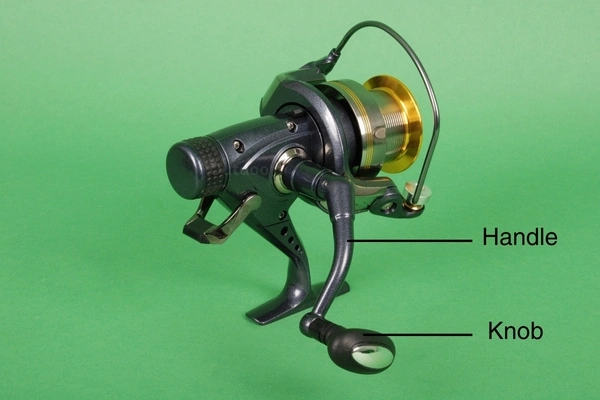
Next, I pay attention to the handle knob material, to ensure its soft but strong. These knobs can come in a variety of materials, from cork to patented rubber materials. While cork is quite comfortable for some, many anglers prefer an EVA rubber material. The bonus of EVA is its comfortable plus slip-resistant.
Third I check the grip, is it comfortable in my palm? The grip must spin in a smooth motion on the handle. Do you feel any friction? Keep in mind, that the tiniest bit of friction increases fatigue. It’s ideal that as you spin the handle there isn’t any push back at all.
Another overlooked material of a reel is the rivets/screws which connect the knob to the handle. Thicker rivets are better since thinner ones can fail over time.
Finally, operate the bail, a good bail should be sturdy and rigid but not too stiff to move when needed.
Consider Choosing A Wide & Shallow Spool
The design of the spool width does more than hold the fishing line. It also controls the casting distance and reduces friction during retrieval.
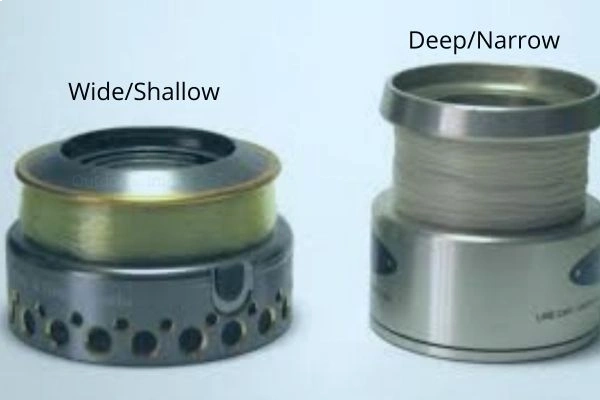
Conventional reel spools come in two typical shapes either a wide/shallow or a deep/narrow. Each of these different depths and widths affects both casting distance and retrieval ability. Another consideration is spool lip depth, as the line casts out the depth will increase. This increased depth means more line hits the spool lip, which creates more friction.
To help understand friction in a fishing reel think about the action of casting. You begin to cast, and next the fishing line begins to unwrap, as it does, it hits the lip of the spool and friction happens. This friction will lower the distance the fishing line can travel.
Attempting to further lower friction, smart brands will bevel the spool lip to help reduce line friction. Some high-end brands like Shimano go farther and use a titanium spool lip. This material is ultra-smooth for the line to run against.
Using A Deep & Narrow Spool
A deep, narrow spool should cast long distances, but the results are debatable. This is because the line will hit the lip during the cast, causing more friction which results in lower cast distances. This design is also problematic for line twists when reeling in. Line twists are “birds nest” like tangles on the spool, which are annoying.
It’s Better To Try Using A Wide & Shallow Spool
A wide and shallow spool is best because it recovers more line on each turn of the handle. As a result, there are fewer line twists created than with a narrow-spool reel of equal size. This enables easier casting and reeling in, especially for beginner anglers.
Plus after comprehensive research, wide-spool reels do make long casts, too. This is because each line wraps around the spool is bigger. As a result, the releasing line is smoother and won’t hit the lip as much. In turn, this free-flowing fishing line reduces friction losses. In the end, you get fewer line tangles and improved casting distance.
Don’t Skimp On Your Drag System
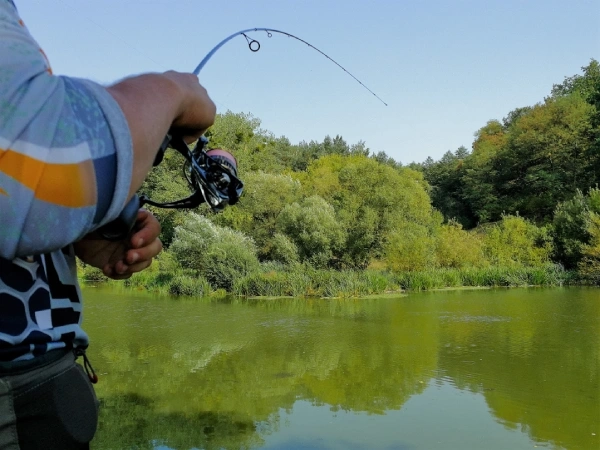
Fishing reel terminology is a bit bewildering to new anglers. Three questions I get asked a lot are as follows.
What Is a Drag System For Fishing Reels?
A drag system is a braking system inside the reel. It applies friction to slow the spool when hooking and fighting a fish. Think of it like when you apply pressure to the brakes in a car. Applied pressure creates drag pressure against a brake material slowing forward momentum. In fishing reels drag gets measured in pounds. Most reels state the maximum amount of drag pressure they can withstand.
Why Do I Need A Drag System?
In the past, before drag systems existed in reels, there was an issue of energy exerted by a fish on the fishing line. In this instance, the brake power to stop a fish from pulling the line off the spool was the angler’s hand strength. Most of the time what happened was either a snapped fishing line or a spool with a bird’s nest. To combat this, manufacturers came up with the solution of the reel having a built-in braking system.
Two types of spin reel drag systems:
Front Drag: Located on top of the spool. It features many large drag washers for increased durability and performance. Found on moderate to expensive spinning fishing reels.
Rear Drag: Found on the bottom of the reel body. Easier access when fighting fish. Don’t stand up against big, hard-fighting fish. Inexpensive reels like the Shimano IX use the rear drag system.
Which Drag Is Best For Spinning Reels
First consider this: drag quality matches reel quality, which means you get what you pay for. Your ideal drag system should be buttery smooth with an easy-to-adjust drag. The line should cast and retrieve at a steady pressure at whatever tension you set the drag. If you decide to skimp and pick a low-quality drag, expect it to cast and retrieve line in an abrupt, stop-and-start way. A low-quality drag system is like returning to the dark ages of fishing. I looked for a reel that comes with a carbon fiber drag system (or a similar material).
A carbon fiber drag is smooth, easy to maintain, and rarely gets flat spots leading to skipping of line.
Bearings Buy Quality over Quantity
What are the bearings inside a fishing reel? Bearings are rotating ring (metal or ceramic) units with ball bearings inside. Their function is to help reduce friction when the bail arm and spool turns. Generally located on the pinion gear, bearings have a great influence on a reel’s smoothness.
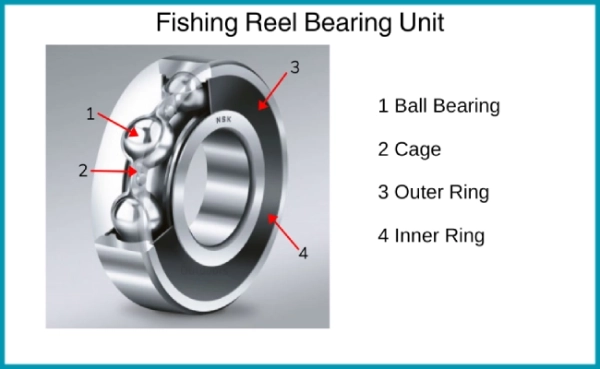
Reels will often print a set of numbers to state bearings like this “6 + 1.”
The first number (6) means a six-ball bearing unit, while the second number (1) means one pinion/roller gear.
Is The Quality Of Bearings Better Than The Quantity?
Yes. Think about it, the easier you can turn the handle, the less fatigue you will feel. Most anglers agree that the more bearings a reel has, the more fluid and smooth the movement is. This is true, but only if the quality of the bearing is exceptional. A spinning reel with 4 quality bearings will outperform a reel with 8 low-quality bearings.
The best choice is to look for reels with shielded stainless steel bearings or ceramic bearings. These types of bearings are super smooth and quiet. Shields are great because they keep out debris and lower friction between the bearings. This results in a swift spinning bearing that spins for a long time. Heavy loads like strong fighting fish don’t affect high-quality bearings.
Whereas if you select low-quality reels expect either cheap exposed metal bearings or bushings. Bushings are cheap, easy to produce and don’t need a lot of maintenance. Using a reel with either of these materials delivers grinding noises and has jerky vibrations when reeling in.
It’s in your best interest to pick the quality of bearings over the quantity. Getting a good reel with high-quality ball bearings will serve you better in the long run.
Gear Ratio – Pick Speed Or Power
The gearing inside a spinning reel is critical for reeling in a fishing line. Gearing is what transmits power through rotation from the handle to the spool. One or many main gears combine with a pinion gear to complete this movement. I like to think of reel gearing like the gears on a bicycle. For bicycles, a low gear spins slow and has more cranking power while a high gear spins fast with less crank power.
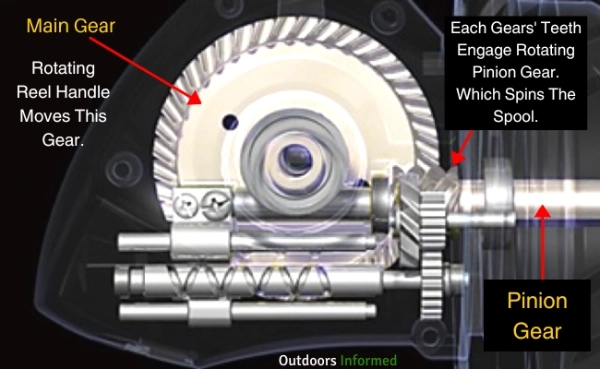
Reels are like this too, but use a ratio to state what speed of gearing is inside. Called gear ratio it consists of two numbers that look like this “6.2:1.” The number (6.2) states the number of times the spool will turn with one (1) rotation of the handle.
Low gear ratio reels such as 4.0:1 are “slow” but provide more torque for fighting stronger big game fish. However, reels with this ratio will need several quick rotations to retrieve the fishing line. Turning the handle over and over increases the chance of fatigue over time.
Whereas reels with a high gear ratio like 6.0:1 are fast since they allow for rapid retrieval of the lure. This is important for finesse fishing, pulling out of a wind loop or when a fish is charging towards you.
Most spinning reels for beginners have gear ratios of 4.0:1 up to 6.2:1 with a few special models clocking in at 7.0:1.
For general applications, most anglers will want a fast gear ratio of around 6.0:1.
Finishing Up: Spinning Reel Basics
Now you have the information to find the best spinning fishing reel for you. Remember to consider the location and what you are targeting. The last decision to make is to match the reel to a rod and get out fishing!
Thanks for letting us at Outdoors Informed aid you in your research. Doing so, lets you spend less time indoors and more time out fishing.
